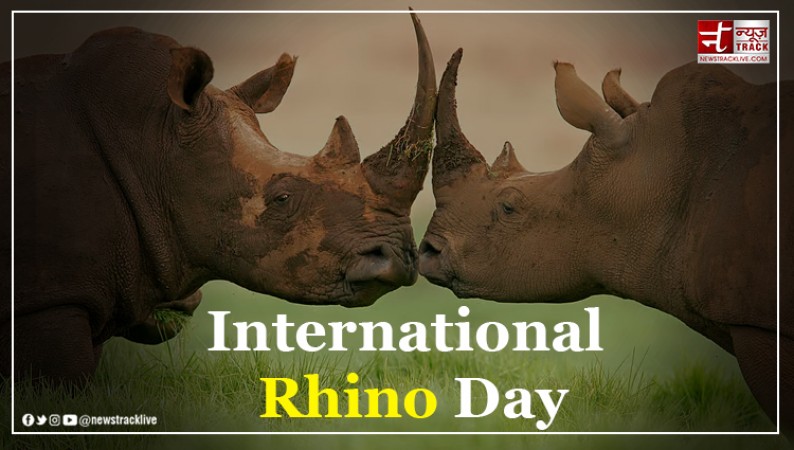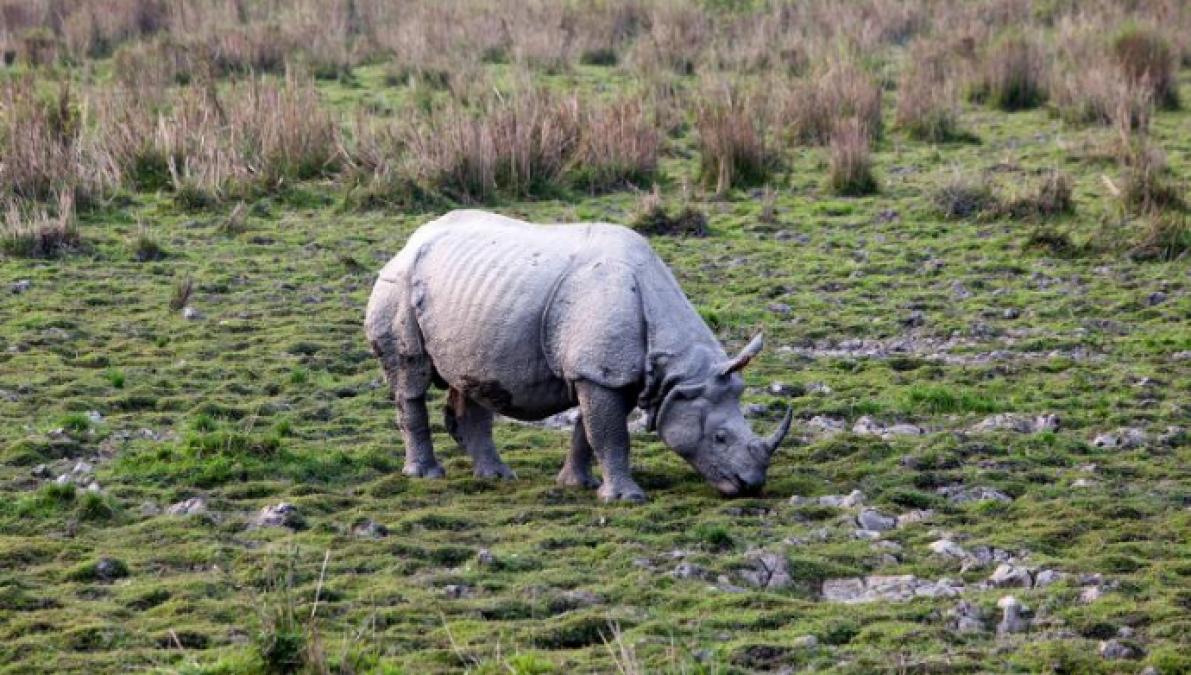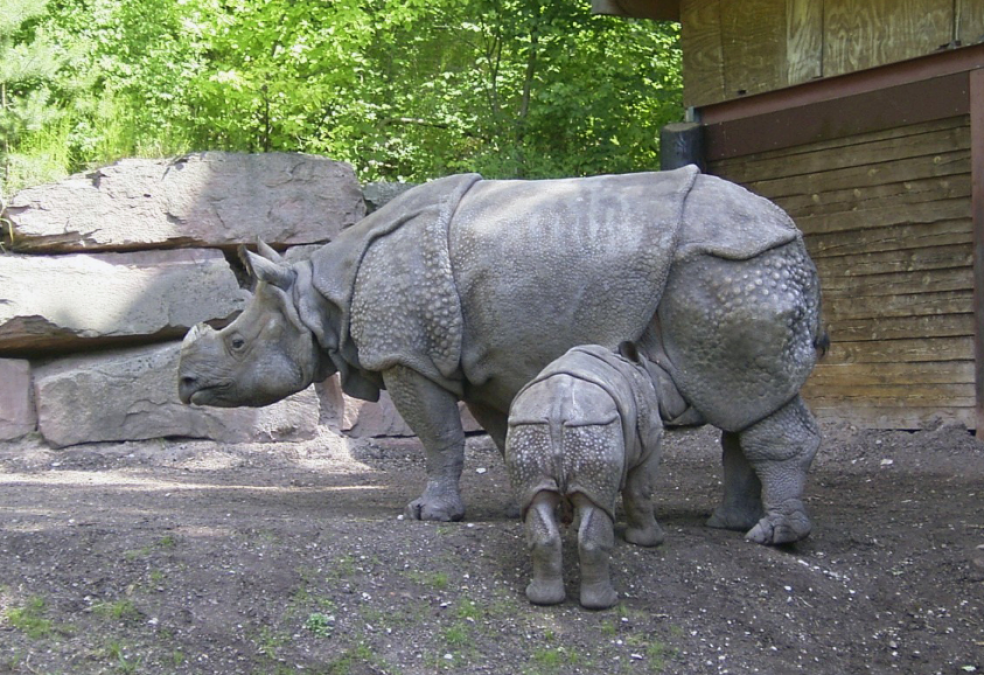
World Rhino Day: The larger one-horned rhino's comeback is considered to be one of Asia's greatest conservation success stories. There are 4,014 larger one-horned rhinos in existence, according to the most recent study of the Asian Rhino Specialist Group (AsRSG), according to the biennial survey finished in early 2022. Since the 1980s, the population of one-horned rhinos has grown by an astounding 167%.
The Day is commemorated annually on September 22 to raise awareness of the various rhinoceros species and the threats they face. Additionally, the Sumatran, Black, Greater One-horned, Javan, and White rhino species are all commemorated on this day.
A chance to honour rhinos in unique ways is also provided by the day for NGOs, zoos, and the general public. Since rhinoceros have become seriously endangered in the wild as a result of persistent poaching and habitat destruction over many years, this day seeks to raise awareness of the significance of safeguarding these creatures.
One of the most seriously threatened species on the planet is the rhino. At the beginning of the 20th century, there were over 500,000 of big beasts roaming throughout Africa and Asia. Since then, the rhino population has been greatly reduced by the terrible surge in rhino poaching for horns and habitat destruction. Only about 26,267 rhinos remain in the wild, outside of parks and sanctuaries.
The majority of countries where rhino horn is harvested for the illicit market are China and Vietnam. Rhino poaching has become lucrative due to the myth that the keratin in rhino horn has medical qualities that can treat a number of illnesses, from hangovers to erectile dysfunction. Because of the illegal trade, rhino horn continues to be more valuable than gold on the black market, making it profitable for poachers.
There are just five remaining species of Asian and African rhinoceros worldwide. Black, Javan, and Sumatran are the three of the five that are in grave danger. Find out more below about each type of rhino.
WHITE RHINO

The largest species of rhino in Africa; is also called the "square-lipped" rhino. The southern white rhinoceros (C. simum simum) and the northern white rhinoceros (C. simum cottoni), which are thought to be extinct in the wild, are the two subspecies of the white rhinoceros.
IUCN Status: Near Threatened
Population: 15,942
Habitat: Grassland and savanna
Weight: 1,800kg to 2,700kg
Distribution: South Africa, Namibia, Botswana, Zimbabwe, Zambia, Kenya, Uganda
BLACK RHINO

The black rhino, commonly referred to as the "hook-lipped" rhino, is about two-thirds the size of the white rhino.
IUCN Status: Critically endangered
Population: 6,195
Habitat: Tropical grassland, Shrublands, deserts
Weight: 900kg to 1,400kg
Distribution: South Africa, Namibia, Zimbabwe, Tanzania, Kenya
GREATER ONE-HORNED RHINO

Rhinoceros unicornis
Asia's largest species of rhino, also known as the Indian rhino.
IUCN Status: Vulnerable
Population: 4,014
Habitat: Tropical grassland, shrublands, savanna
Weight: 1,800kg to 2,700kg
Distribution: India, Nepal
SUMATRAN RHINO

Dicerorhinus sumatrensis
The closest living relative to the woolly rhinos. Only species to still be covered in hair.
IUCN Status: Critically Endangered
Population: 34 to 47
Habitat: Tropical and subtropical forests
Weight: 550kg to 1,000kg
Distribution: Sumatra, Sabah
JAVAN RHINO

Rhinoceros sondaicus
All Javan rhinos in the world survive in Ujong Kulon National Park.
IUCN Status: Critically Endangered
Population: 76
Habitat: Tropical and subtropical forests
Weight: 900kg to 2,300kg
Distribution: Sumatra, Sabah
2022 World Rhino Day Theme
The theme for this year's World Rhino Day is "Five Rhino Species Forever." The purpose of this day is to raise awareness of the importance of protecting rhinos from threats to their survival. There is a serious threat to rhinos all the time.
2022 World Rhino Day: Importance
Due to poaching, climate change, and changes to their natural environment, rhinos are in danger of being extinct. The annual observance of the day places an emphasis on raising awareness of the need to preserve and protect the rhino species on a global scale. Three rhino species—the black, Javan, and Sumatran—are thought to be in grave danger today.
Day of the Rhino: History
2010 saw the day's announcement made by WWF-South Africa. In order to spread awareness about the need to save or protect all five species of rhinos from extinction, Rhishja Cota, the event's creative director, and Lisa Jane Campbell, the founder of Annamitici and owner of the Chishakwe Ranch in Zimbabwe, teamed up in 2011.
The yearly event attracted attention on a global scale. World Rhino Day was first celebrated in 2011, and it has been celebrated annually ever then.
The Unicorn of wildlife
The greater one-horned rhino (Rhinoceros unicornis) is the only one of the five species that is native to the Indian subcontinent and is exclusively found there, along with Nepal and Bhutan. This rhino species was previously considered to be the most vulnerable. There were merely 200 people left on the globe at the turn of the 20th century.
The one-horned rhinos were slaughtered without discrimination for their horn, making them the most prominent victims of poaching and illegal wildlife trading. The largest markets have been in China and Vietnam, where traditional medicine still employs rhino horn as a party drug, health supplement, and treatment for gout, fever, arthritis, headaches, nausea, and stomach problems, as well as for boils, infantile convulsions, food poisoning, inflammation, and infections.
According to some antiquated superstitions about Eastern medicine, rhino horn can be used to treat hallucinations, snake bites, and "demonic possessions." Superstitions are a terrible story that doesn't end here. Many adherents of conventional Chinese and Vietnamese medicine also assert that a water solution made from powdered rhino horn can treat cancer.
Even Traditional Chinese Medicine (TCM) practitioners assert that there is no scientific basis for such claims, hence the term "superstitions." Keratin, the same protein that makes up human nails and hair, makes up rhino horn. Therefore, chewing on your fingernails or hair should be just as effective at curing illnesses as rhino horn should be. Members are urged not to use any additional parts from endangered animals, according to a statement from the World Federation of Chinese Medicine Societies.
Stampede in Russia after Putin's statement, people are not getting flight tickets
Indiscriminate shooting at Mexican bar, 10 died
ISI agent Lal Mohammad shot dead, daughter jumps off terrace to save father